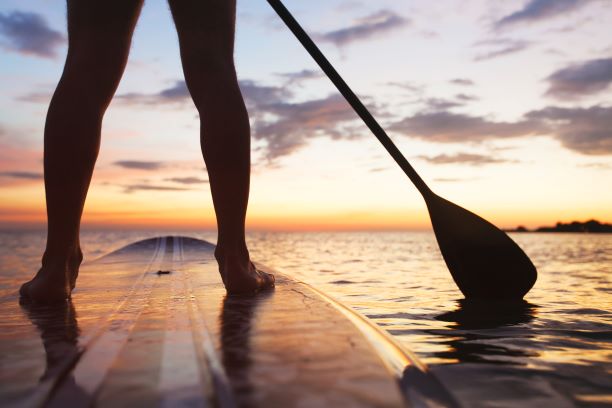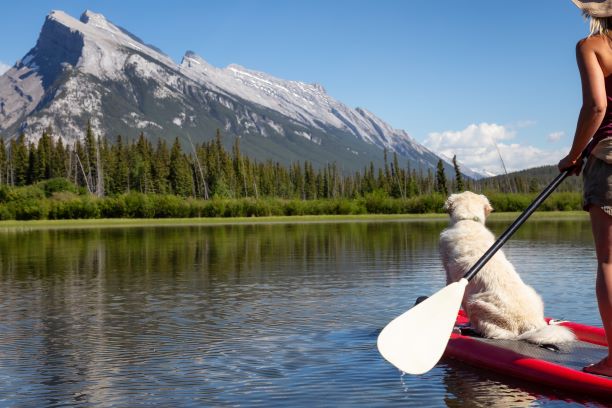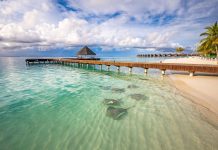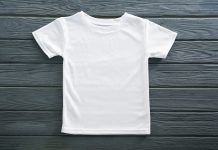
Contents
Last Updated on 26th April 2024
Paddleboarding is a water sport that is quickly growing in popularity. It allows you to get a full-body workout all whilst soaking in the fantastic scenery. It is different from surfing in that you do not need to ride a wave. Whilst it is best done on an open ocean, you can also paddleboard on a lake or a dam, even a river or creek.
We always recommend that you paddle board on calm waters, in daylight rather than under the midnight sky. We also urge you to tell someone where you are going if heading out and that you know how to paddle board before going onto open water.
Going out on a paddle board gives great calmness with the freedom, and much like the wellness benefits of horse riding can be great for the soul.
Learn how to paddle board
In this article, we take a look at how to paddle board. Whether you’re a beginner and don’t have much of a clue as to what you should be doing, or you just want to know what you are getting yourself into, we take a look at what you need to know. Shall we?

How to stand up on a paddle board
A stand up paddleboard (SUP) is relatively new and one of the trends for 2020 lockdown. It has become trendy, and you will love the feeling of the water and the beautiful synchronisation that you will have with it once you get the hang of it.
However standing upright on a paddleboard, is not as easy as it seems unless you are an experienced at boardsports. Staying upright is not as easy as it looks; there are many common mistakes that people paddle boarding for the first time make. Standing up is the pinacle of learning how to paddle board.
When you want to paddle board, make sure the water is calm and that there aren’t any waves. A good sunny day with calm waters is what you want.
One of the first things to avoid is placing your paddleboard down too close to the beach, or bank. There is a risk of it becoming wedged. You need to make sure that you go out into the water enough to have the board floating in the water rather than sitting on the sand.
Then, practice getting on your knees on the board. Make sure that you are in the middle of the board. You can do this initially, on dry ground, so that you get used to the feel of the board. Then you can try it out on the water. To get a hold on kneeling on the paddleboard, you can practice putting one knee on each side of the board, straddling the board.
The next thing you will want to do is hold the paddle, in front of you, keeping your fingers spread. Then move your foot up to where your knee was initially. As you do this, make sure to keep your elbow straight. Once you are satisfied that you are steady, You can then bring the other foot up to where your other knee was.
Now that you are standing up, you can use the paddle, making sure that it is angled to the front. The best stance to have as you are paddling is to have your knees slightly bent in the same way that you do when you ski. Also, make sure that you look ahead once you are standing up. Looking down at the water can mess you up. Keep your eyes focuses on where you want to go.
Holding the paddle in the wrong way can sink you or steer you in the wrong direction. It needs to be close to the board. If the paddle is too far away from the board, it will turn the paddleboard. If the paddle is angled backwards, it pushes the water in the wrong direction, and can potentially sink you. To paddle straight ahead, hold the paddle as straight as you can, with one hand on the shaft and the other on the top end of the paddle.
To turn the board, you will need to lower your body closer toward the water, and then you will need to push the paddle further out.
When you hold the paddle, ensure that your hands are not too close; otherwise, it could make your life harder. Try to keep the paddle at least halfway down the shaft. This way, you get a lot of power as you make your strokes and you also have more stability as you stand.

What is paddleboarding?
Paddle boarding is the art of using a board to float on water, then steering with your arms. You can either do this standing up or sitting down. It is now a prevalent water sport. Some do it for the views, and for some, it’s competitive.
Stand up paddleboarding is a version of this outdoor sport that came to prominence 2013 in the USA but is long connected with Hawaiin culture (Hoe he’e nalu). Using a pole to move a floating platform for travel and hunting has been a method of travel since prehistoric times in all continents.
Paddleboarding is often confused with surfing, and yet it is quite different. You will do much better with calmer stiller waters when you paddleboard, rather than riding the waves when surfing. Think scenic pleasure, over fast-paced excitement. Stand-up surfing has been recognised as a sport since the 1990’s, and orientated in 1960’s Hawaii.
Stand up Paddleboarding, also known as SUP, may be new, but paddleboarding goes as far back as the 60s. Even though it began so far ago, it became popular in the 2000s. It is an addictive way to get to feel the water beneath your feet, the soothing calm of waves whether you are fishing, doing yoga, or competing.
What to wear paddleboarding
When you are paddleboarding, certain clothes will make the job more comfortable, and make your experience more enjoyable. You need to consider safety as well as comfort. The lighter the clothes that you wear are, the easier it will be for you to stand up straight and stay that way on the paddleboard.
What you wear will also depend on the weather. If it is hot, look for moisture-wicking clothes. You also want to make sure that you can take a quick dip in the water. So your clothes should be ready for the water. Lightweight garments are easier to handle and will not be heavy when they get wet. You may also want to wear a hat that can protect you from the cold.
In cold weather, make sure to get a drysuit that has layers to keep both the cold and the wetness out. Ensure that your clothes are also warm enough to keep your body temperature regulated. You can also wear thermal boots and gloves to keep you warm. A drysuit can retain water and cold out using a vacuum seal around the wrists and ankles.
What you wear out on the water can make your time on the water a memorable experience, or they can simply ruin it all for you. It’s just a case to learn how to paddle board, it’s important to understand what to wear.
Where to buy paddleboards and equipment?
Due to huge popularity in the summer of 2020, a lot of retailers went out of stock and had long waiting lists. There are still some available and the best chance of success at the time of writing to buy SUP Boards on Amazon.



































